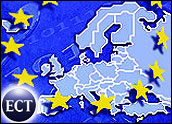
Recently, a new value-added tax (VAT) law was enacted to level the playing field between Europe-based and U.S.-based companies in the European e-commerce market. Previously, U.S. e-commerce companies doing business in Europe had not been required to charge value-added tax, putting their European counterparts at a disadvantage.
For example, Giga vice president Martha Bennett told the E-Commerce Times, UK ISP Freeserve “has consistently campaigned against AOL, which supplied services to UK customers free of VAT. Freeserve had to charge its customers 17.5 percent UK VAT. This distortion has now gone away.”
How will the new rules affect U.S.-based companies trying to establish or keep a foothold in the European e-commerce game?
VAT Revamp
The new VAT rules are extremely specific in terms of what they do and do not require from companies doing business in Europe.
For starters, the rules apply only to digital goods, known in official documentation as electronically supplied services (ESSs). Such goods include software, games, music, broadcast services, images and anything else that is transmitted and sold digitally. The rules apply to business-to-consumer (B2C) sales only, because business-to-business (B2B) sales are covered under a different VAT law.
Bringing taxes on these goods in line with those on other products was the impetus behind the new rules. Taxes on physical merchandise imported from outside the EU have been levied for some time. Similarly, digital products sold by EU online merchants have been subject to local VAT rates, regardless of where the customer resided.
The main effect of the new VAT rules for U.S.-based companies is that they will no longer have a significant edge over their European competitors.
Europe’s New Outlook
According to figures from the European Commission, 90 percent of online sales occur in the B2B space, which will not be impacted by the new VAT rules. Still, that ratio could change now that the B2C playing field has been leveled by the new regulations.
Given the differences in e-commerce efforts by country, though, it may be some time before Europe surpasses the U.S. in terms of overall online purchasing.
“On the whole, e-commerce in Europe is humming along nicely, but the picture differs considerably between countries, and there are some surprising observations,” Bennett said.
For example, she noted, although the Nordic countries are the most wired, just 48 percent of Sweden’s online population has ordered something online in the past three months.
On the other hand, other countries trump U.S.-based companies in terms of e-commerce. In the fall of 2002, UK online sales represented 4 percent of overall UK retail sales. In the United States, that figure was just 1.3 percent.
Paying the Tax Man
There are two main ways in which a U.S. e-commerce company doing business in Europe can comply with the new rules. It can register for VAT in every EU country into which goods are sold, then account for VAT receipts locally. Alternatively, it can register under a special rule in one country and apply local tax rates.
Some larger companies choose the latter method by establishing an operational base in a European locale that has a favorable tax rate. “As long as your servers are there, you’re there,” said Doug Schwegman, director of market and customer intelligence at CyberSource, an electronic payment provider.
Currently, Luxembourg has the lowest VAT rate, at 15 percent, and Sweden and Denmark have the highest, at 25 percent, which could explain the low rates of online commerce in Sweden.
Following the Rules
Some U.S.-based e-commerce companies have anticipated that such a ruling would be issued since it first began to be discussed last summer. In fact, many large U.S. e-commerce companies have been paying the VAT tax bill for years without being legally required to do so.
For example, Yahoo spokesperson Scott Morris told the E-Commerce Times that his company has been paying VAT since it first launched in Europe.
“We’ve built local sites by country,” he said. “For example, the German site is for consumers in Germany. This addresses the challenges in each country in terms of language, product availability and merchants. It also helped us to address issues specific to that country, like different levels of credit card usage.”
In addition, this tactic helped Yahoo collect and report VAT without having to put forth a large, post-regulation effort. Other U.S.-based companies that have been collecting VAT for a while also should be spared any major upheaval in the short term.
Hurry Up and Wait
However, it remains to be seen what the long-term effects of the regulationswill be. Smaller U.S. companies that have not charged VAT in the past may be the most affected, according to Bennett.
“For very small U.S. suppliers depending on EU sales for a significant part of their sales, it could be quite damaging, and possibly even force some out of business,” she said.
CyberSource’s Schwegman warned that there are strong provisions for enforcement in the new rules, so companies should not doubt the EU’s commitment to pursuing tax evaders.
“How to police the tax laws will be up to each country and its local tax authorities,” he said. “They can be pretty serious with people that don’t pay, though. For example, they can invalidate your patents and copyrights in every EU country. That alone should encourage people to comply.”


























































Social Media
See all Social Media